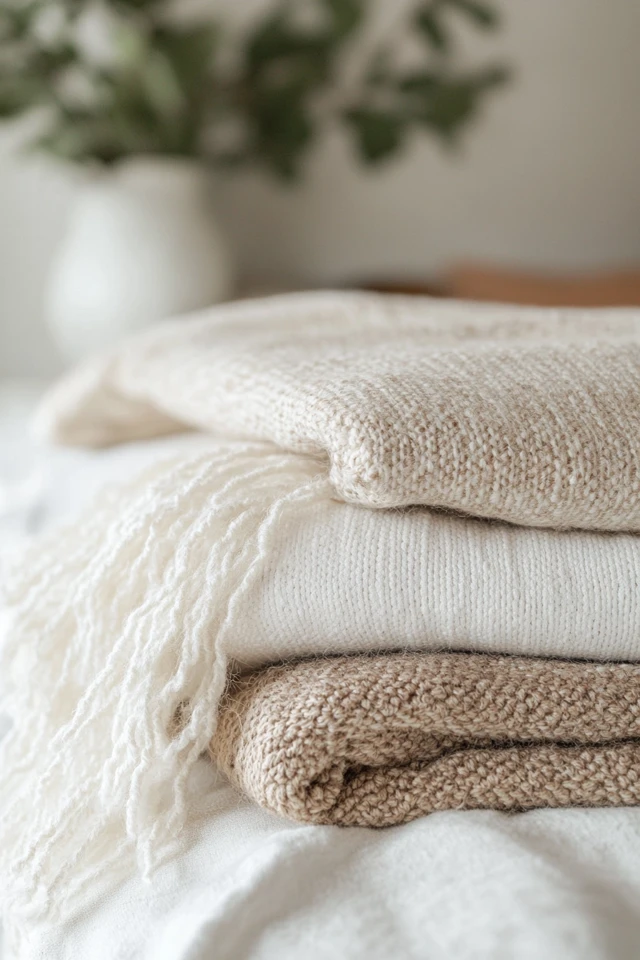Introduction
Designing a nursery is always a special project, but creating a farmhouse-inspired nursery takes it to a whole new level. When I was expecting my first child, I remember spending countless hours dreaming about the nursery. I wanted it to feel calm, cozy, and timeless—everything that farmhouse design embodies. But it wasn’t just about aesthetics; I needed the space to be functional and practical for all those late-night feedings and diaper changes.
The result was a room that perfectly combined soft textures, warm wood tones, and vintage-inspired details. From a shiplap accent wall to a rustic crib, the nursery felt like a serene retreat, not just for the baby, but for me too. And let me tell you—there’s something magical about rocking your little one to sleep in a room that feels so thoughtfully designed.
If you’re planning a farmhouse-inspired nursery, you’re in for a treat. This guide will walk you through every step, from choosing the perfect color palette to selecting furniture and accessories. Let’s create a space that’s both beautiful and functional for your little bundle of joy.
Step 1: Start with a Calming Color Palette
Farmhouse nurseries thrive on soft, neutral tones that create a soothing atmosphere for your baby.
Popular Color Options:
- Whites and Creams: Perfect for a clean, timeless look.
- Greige (Gray + Beige): Adds a modern farmhouse touch.
- Muted Pastels: Soft shades of sage green, dusty blue, or blush pink work beautifully as accents.
Wall Ideas:
- Shiplap Walls: Nothing says farmhouse like shiplap. Install it on one wall as an accent or throughout the room for a bold statement.
- Neutral Paint: A warm white or light gray serves as the perfect backdrop for farmhouse décor.
Step 2: Choose Farmhouse-Inspired Furniture
The Crib
The crib is the centerpiece of your nursery, so choose one with farmhouse charm:
- Wooden Cribs: Look for cribs with distressed or natural wood finishes.
- Iron Cribs: A wrought iron crib in matte black or antique white adds vintage elegance.
Changing Table/Dresser
A functional and stylish changing table is a must:
- Repurpose a vintage dresser and top it with a changing pad.
- Choose a piece with plenty of storage for diapers, clothes, and baby essentials.
Rocking Chair or Glider
You’ll spend a lot of time here, so choose a comfortable chair that complements the farmhouse aesthetic:
- Wood Rockers: Pair a traditional wooden rocking chair with a soft cushion.
- Modern Gliders: Opt for upholstered gliders in neutral tones with clean lines.
Bookshelves and Storage
Incorporate farmhouse-style storage options:
- Floating wood shelves for books and décor.
- Woven baskets for toys and blankets.
- A wooden chest or vintage trunk for additional storage.
Step 3: Add Farmhouse Textures and Textiles
Bedding and Linens
Choose soft, natural fabrics for your nursery:
- Crib Sheets: Opt for patterns like gingham, stripes, or florals in neutral or pastel shades.
- Blankets: Layer with cozy knit or muslin blankets for added texture.
Rugs
A plush rug will make the space feel warm and inviting:
- Go for natural fibers like jute or wool.
- Consider a neutral area rug with subtle patterns like stripes or vintage-inspired motifs.
Curtains
- Light, linen curtains add softness and let in natural light while maintaining privacy.
- Roman shades in a neutral fabric are a great option for smaller spaces.
Picture Gallery
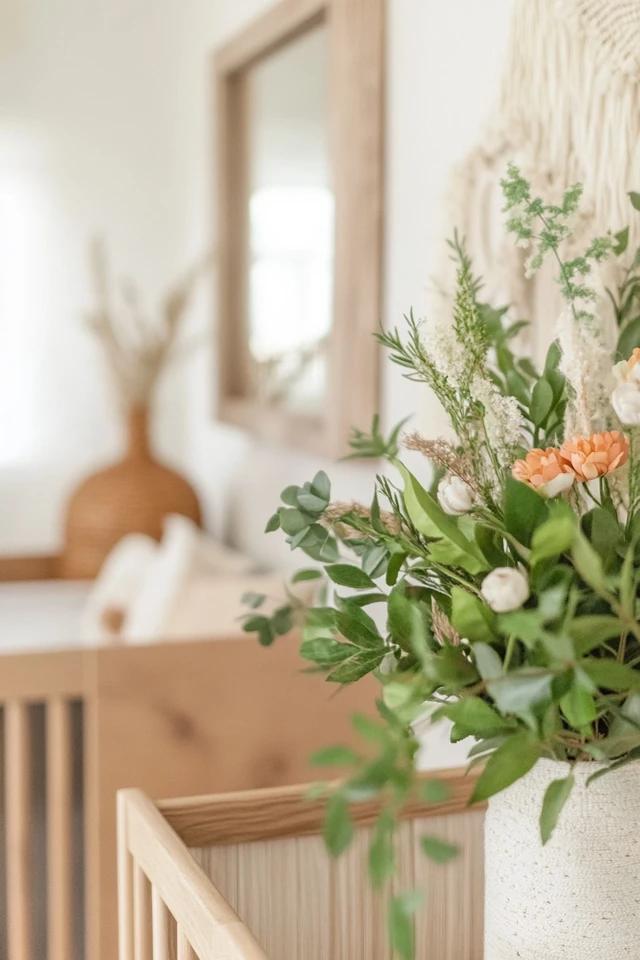
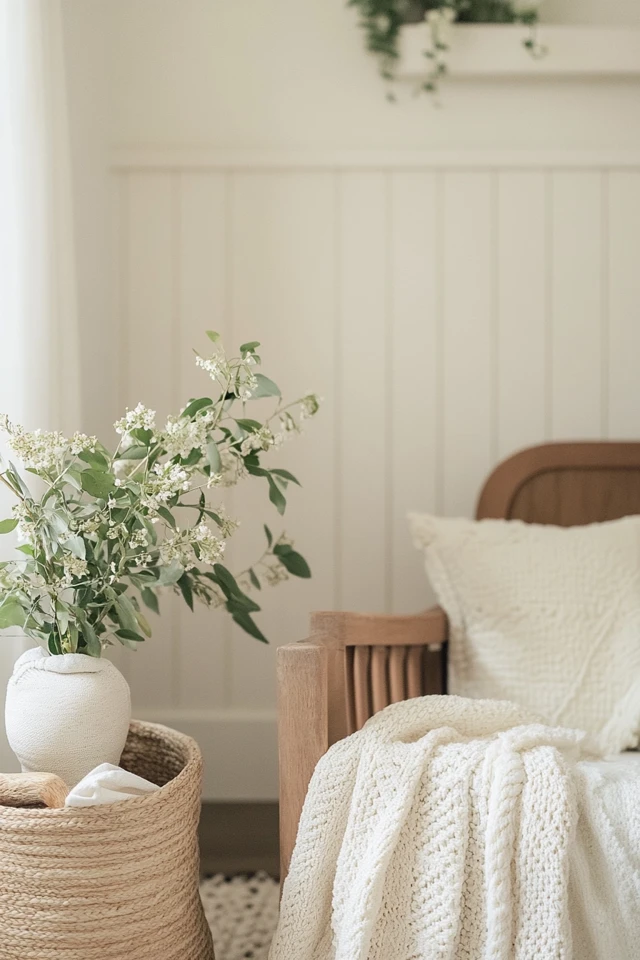
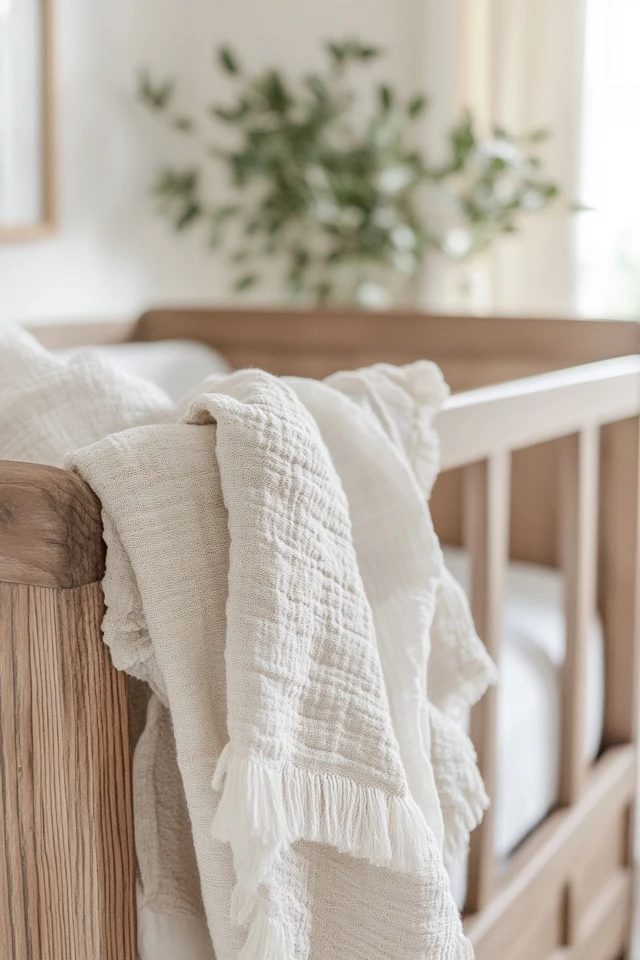
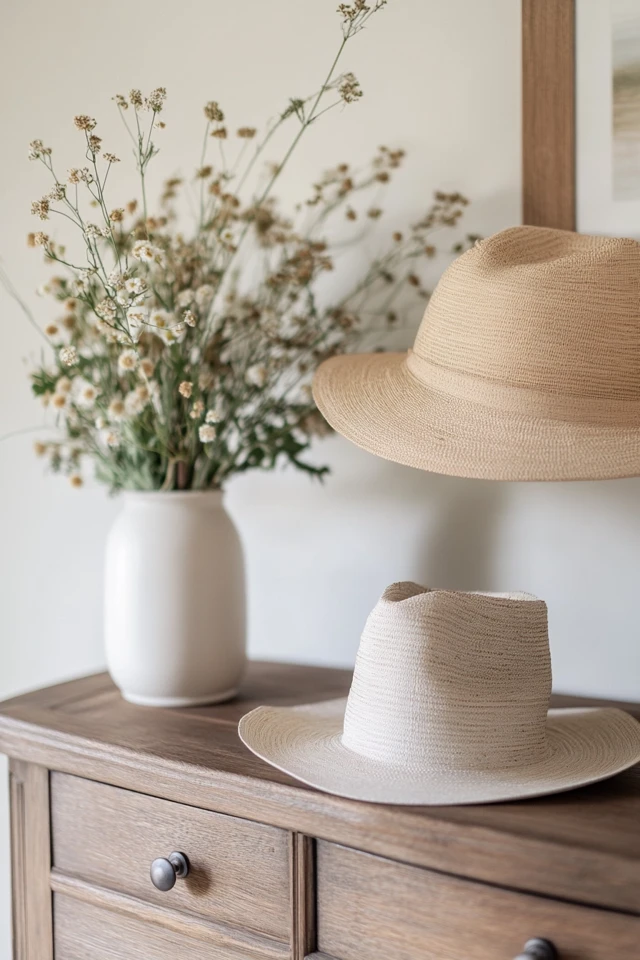
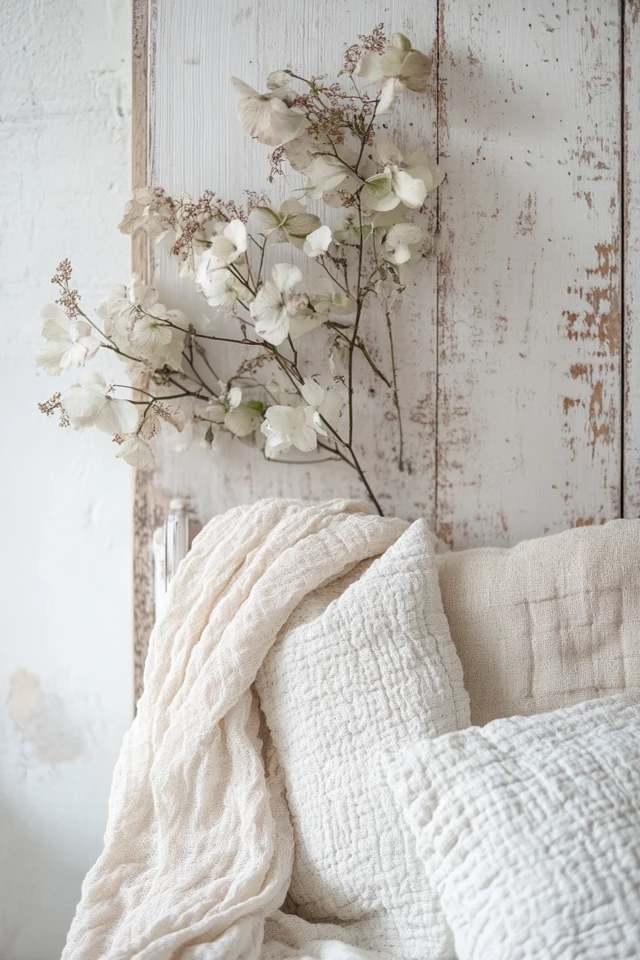

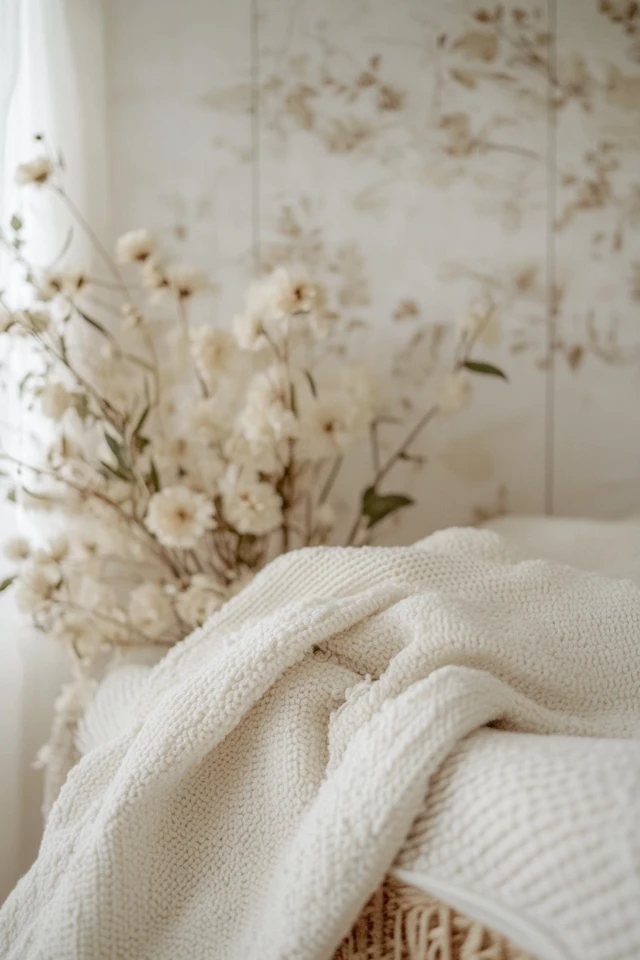

Step 4: Farmhouse Décor and Accessories
Farmhouse décor is all about the details. Here’s how to infuse charm and personality into your nursery:
Wall Décor
- Personalized Signs: Hang a wooden sign with your baby’s name or initials.
- Vintage-Inspired Prints: Consider framed botanical sketches, animal illustrations, or black-and-white photography.
- Peg Rails: Use a peg rail to hang baby blankets, hats, or small toys.
Lighting
- Add a statement light fixture, like a wooden chandelier or metal pendant.
- Incorporate a table lamp with a fabric or burlap shade for softer lighting.
Greenery
A touch of greenery adds life to the nursery:
- Place a small potted plant on a shelf (real or faux).
- Use eucalyptus garlands for a subtle pop of green.
Personal Touches
- Display heirlooms like vintage toys or family photos.
- Use woven baskets to organize baby essentials while adding texture.
Step 5: Make It Functional
While farmhouse style is all about charm, the nursery needs to be practical, too.
Organized Storage
- Use labeled bins or baskets for diapers, wipes, and clothes.
- Keep everyday essentials within arm’s reach of the changing table.
Comfortable Layout
- Position the rocking chair near a small side table to hold bottles, books, or a nightlight.
- Leave enough space for safe movement and easy cleaning.
Blackout Shades
- Install blackout curtains or shades to help your baby sleep during the day.
Seasonal Touches
The beauty of farmhouse design is its adaptability. Update your nursery décor with the seasons:
- Spring: Add floral accents or pastel throws.
- Fall: Incorporate cozy knit blankets and warm-toned pillows.
- Winter: Use a faux fur rug or festive holiday décor.
Conclusion
Designing a farmhouse-inspired nursery is a labor of love that combines warmth, charm, and practicality. From the soft neutral palette to the rustic furniture and cozy textiles, every detail contributes to a space that feels like a safe and peaceful haven for your baby.
When I walk into a farmhouse nursery I’ve designed, I’m reminded of why I adore this style—it’s timeless, calming, and so full of heart. As you embark on this journey, remember that the most important part of the nursery is the love and care you put into creating it. With a thoughtful mix of design and functionality, you’ll have a space that you and your little one will cherish for years to come.
FAQ
What colors work best for a farmhouse nursery?
Soft neutrals like white, cream, beige, and gray create a calming foundation. Add muted pastels like sage green or dusty blue for subtle accents.
How can I add farmhouse charm on a budget?
Repurpose vintage furniture, use peel-and-stick shiplap for walls, and add inexpensive accessories like woven baskets or DIY wooden signs.
Is shiplap safe for a nursery?
Yes, as long as it’s installed securely and finished with non-toxic paint or stain.
What type of crib fits a farmhouse nursery?
Wooden cribs with distressed finishes or wrought iron cribs in antique white or black are perfect for farmhouse nurseries.
How do I make the nursery functional for nighttime feedings?
Place a comfortable rocking chair near a small table for essentials like bottles, a nightlight, and burp cloths. Use blackout curtains to ensure your baby gets restful sleep.

